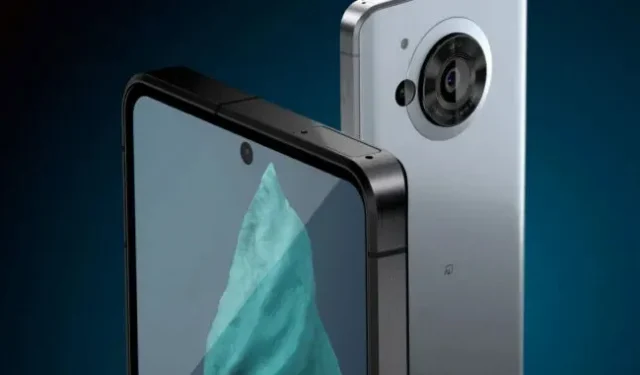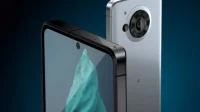The latest entry in our ongoing round of “cool phones you can’t buy in the US”is the Sharp Aquos R7.
This phone will go on sale in Japan in July, and it’s proof that it’s possible to make a unique smartphone these days. Sharp is no stranger to unique design, and with the R7 it fixes many of the confusing design decisions made by other smartphone makers.
First, Sharp continues its trend of putting absolutely massive camera sensors in its smartphones. The back of the phone is dominated by a single 47.2-megapixel camera with a 1-inch sensor and a large lens. Most smartphone makers ship three to four questionably useful smaller rear cameras on the back of their devices, but Sharp is giving people one giant camera that can produce higher quality images.
Next to the huge camera sensor is a tiny 2MP sensor, but Google’s translation on the product page calls it “distance measurement sensor”, so it doesn’t look like you can take pictures with it.
The display is something to write home about too. The phone has a 6.6-inch Sharp IGZO OLED screen with a resolution of 2730×1260 and a best-in-class refresh rate of 240Hz. Best of all, the display is flat, unlike other Android flagships that insist on using a curved display that distorts the edges of the screen. No manufacturer has yet explained what benefits a curved display brings.
The Snapdragon 8 Gen 1 will have to handle the task of rendering Android at 240fps (good luck with that). Other specs include 12GB of RAM, 256GB of internal storage, and a 5,000mAh battery. There is a microSD slot, IP68 dust and water resistance, a 12 MP front camera and a USB-C port. Sharp has even found room for a top headphone jack.
Another great-sounding feature that you can apparently only get on hard-to-find smartphones is Qualcomm’s “3D Sonic Max”fingerprint sensor. This in-screen fingerprint sensor is making a name for itself thanks to its size. Sharp does not specify its size, but previous presentations have indicated that the sensor is large enough to fit two fingerprints.
The main problem with in-screen fingerprint sensors is that the glass display, which doesn’t have a tactile indicator of where to place your finger, makes it easy to miss the sensor and not read your fingerprint. Just making it all bigger is an obvious (albeit expensive) way to make in-screen fingerprint sensors work more reliably. Qualcomm announced this sensor in 2019, and the number of phones that have since adopted it is inexplicably in the single digits.
All in all, the R7 looks like a very interesting flat phone that fixes most of the things we usually complain about in reviews. One big camera, big fingerprint sensor, flat screen and headphone jack? Please other smartphone manufacturers take note.


